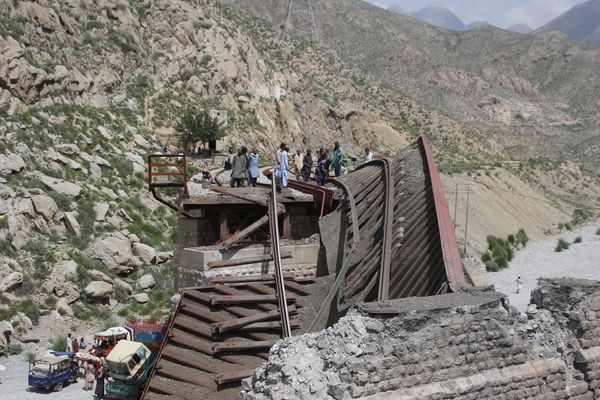
Your support helps us to tell the story
An extremely rare partial lunar eclipse of a supermoon was visible overnight to the delight of stargazers across the world.
Two lunar phenomena merged on Tuesday night, leading to a red tinted moon moving across the sky.
A supermoon occurs when the moon appears 30 per cent brighter and 14 per cent bigger in the sky. It is when the Moon is at its closest point to Earth in its orbit.
The partial eclipse was on show at its fullest on Tuesday night and will also be seen for the next few nights.
A similar event is not expected to happen again until August 2026.
The supermoon was most clearly sighted in the UK and the US, but stunning pictures were shared from Latin America, Europe and Africa, as well as parts of Asia and the Middle East.
This month's full moon is known as the Harvest moon and it is the second of four supermoons this year.
Here are some of the best pictures from around the world:
The moon was at its brightest in the UK at around 3.45am on Wednesday morning but could also be seen behind landmarks in the US, Russia and China.
The full moon has a slight red tint as it passes through Earth’s shadow because the light from the Sun passes through Earth’s atmosphere.
“A lunar eclipse occurs at full Moon, and when the shadow of the Earth falls on the Moon. The Earth’s shadow as viewed from the Moon is actually much bigger than the Moon itself, so a lunar eclipse can last a long time and be seen by a whole hemisphere on the Earth,” Don Pollacco, a professor of physics at the University of Warwick, previously told The Independent.
“The shadow of a planet produces an umbral and penumbral shadow depending on the location of the planet and the Sun. The darkest eclipses occur when the Moon moves through the Earth’s umbral shadow.
“A penumbral eclipse occurs as the moon moving through the penumbral shadow of the Earth. In these cases, the darkening of the moon is usually quite difficult to spot, as some of the Moon is still being illuminated by the Sun.”







